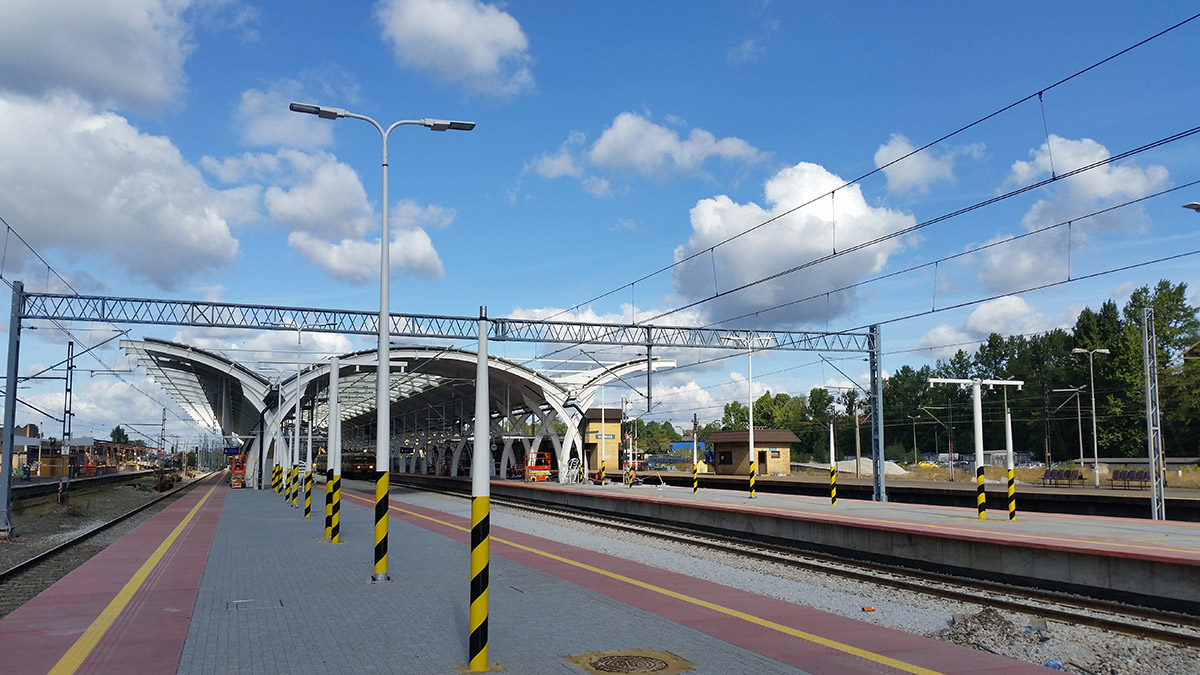Foundation selection for lighting poles
What foundations to choose for a lighting pole? What influences the selection of the appropriate foundation? We invite you to read the article to find out the answers to these and other questions!
Lighting poles made of polymer composites, reinforced with glass fiber, can be dug directly into the ground, which is the best solution, which is limited only to drilling a hole in the ground. However, we do not always deal with coherent and concise land. Very often, lighting poles are placed on wetlands or on loose soil. The designer’s task is to examine the land at the investment site. If the conditions indicate the necessity to build in the foundations, the type of foundation depends on the height of the lighting column and the spacing of holes in the column’s base and mounting pins in the foundation. Two types of foundations are used for our composite columns: for columns with a height of 3 m to 6 m, the F 100/30 foundations with a spacing of pins 200 x 200 mm are intended, while for columns with a height of 7 m to 12 m, inclusive, they are used foundations F 120/43 with a spacing of pins 300 x 300 mm.
The F 100/30 foundation is 1000 mm long with a square cross section of 300 x 300 mm.
The F 120/43 foundation is 1200 mm long with a square cross section of 430 x 430 mm.
The advantage of using foundations for lighting poles is the ease of plumbing the poles on the investment site after installation.
The foundations are intended for the foundation of lighting columns, the fixing moment of which does not exceed Mg, and the soil strength G = 390 kN / m x m, (according to PN-EN 40). Foundations in the form of a monolith (single element) made of reinforced concrete, class C 30/37 with appropriate openings for inserting cables with a cross-section of max. 4×95 mm. The concrete in the form is mechanically compacted and constitutes a single block in which the nuts for fixing the pole base are embedded.
CHARACTERISTICS OF THE PREFABRICATED FOUNDATIONS:
- BETTER INSULATION PROPERTIES
- BETTER ANTI-WATER PROPERTIES
(without concrete joint) as in the case of a traditional brick foundation. - MADE WITH MORE CARE
- BETTER HEAT INSULATION
- TIGHT ANTIRADONE INSULATION
- EXCELLENT LOAD CAPACITY AND DURABILITY
Assembly:
Using an excavator, make an excavation in the native soil, 150 cm deep and 100×100 cm wide. In the case of a manual trench, the width of the trench may be smaller enough to allow the foundation backfill to be compacted with a soil compactor in layers every 30 cm. At the test site where crash tests are carried out, the existing backfill should be selected from the standard pit to a depth of 150 cm, and then the backfill at the bottom of the pit should be compacted.
Before placing a prefabricated concrete foundation of the type, it is necessary to check the degree of compaction of the trench bottom. It is required that the soil compaction coefficient Id reach the minimum value of 0.8 as for the so-called very compacted soils. After setting and leveling the foundation, it should be backfilled with layers of backfill with grain size 0-31.5 (natural crushed aggregate). Each layer of backfill with a thickness of 30 cm should be compacted with a soil compactor.





